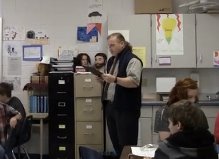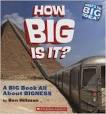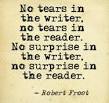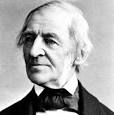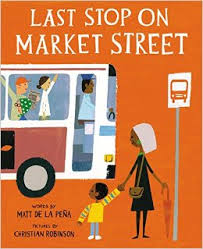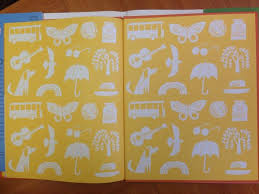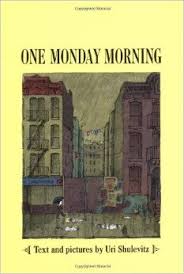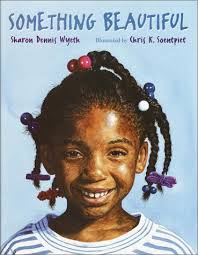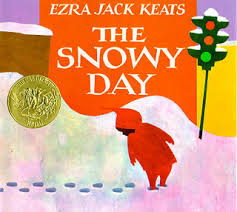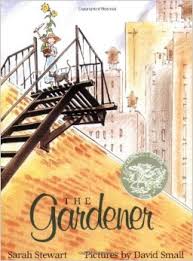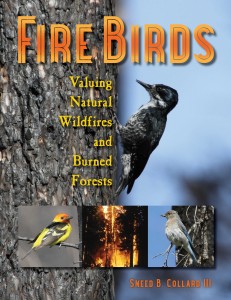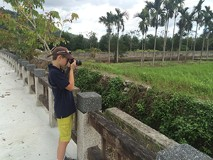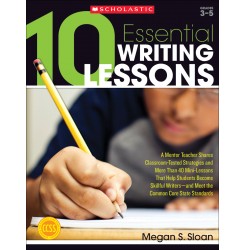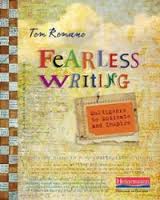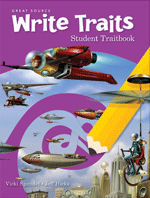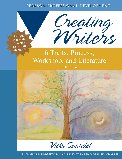Brief Introduction by Vicki
Recently, I had an opportunity to travel to Australia and New Zealand, and while composing a post related to that marvelous adventure (to appear here soon!), I stumbled upon yet another opportunity–the chance to revisit Diddorol, the magical gaming kingdom developed by middle school teacher Larry Graykin, who is easily one of the most inventive teachers I’ve ever encountered. Writing instruction in Larry’s classroom has all the charm and allure of any video game, and in the four years since I interviewed him last, I learned that Diddorol has evolved. The rules for earning points in this gaming system may appear complex, but everything comes into focus if you keep in mind that Graykin’s goals are ingeniously simple: to motivate student writers–big time, to get them not only knowing but actually using the six traits, to maximize their opportunities to work collaboratively in teams, to expose students to as many forms of writing (e.g., fiction and nonfiction) within a short time as possible, and to ensure that every student has an opportunity some way, somehow, to show off his or her strengths–editing, voice, word choice, original thinking, or whatever. But enough from me. Let’s let Larry, who invented the kingdom, tell its story . . .
In Larry’s Own Words
During the summer of 2012, as most people tuned in to watch the world’s best athletes compete in the Olympics, I was puzzling and planning. The prior school year, I had piloted a game overlay about a fantasy Kingdom called Diddorol. You can learn about that here:
https://sixtraitgurus.wordpress.com/2011/11/05/gaming-meets-the-six-traits/
And in more detail, here in a recent article I wrote for In Perspective:
http://www.ohiorc.org/adlit/InPerspective/Issue/2015-03/Article/vignette2.aspx ].
The experience was amazing for both my students and me, but at the end of the year, I had a problem: As my class was multiage grades 7 & 8, I was going to have half of the same students coming back to me. I could not use the same game again…that’d be boring.
Well, I called it a problem above, but it really was an opportunity. Why not experiment and see what other games I might come up with? I decided to pilot three new overlays, one per trimester. That also meant that I could focus on one at a time.
And so, I set in on Trimester One’s overlay. I started with a goal to have students read each other’s writing more often, and to view the pieces critically. I also wanted to try building more intrinsic reasons for students to complete their work, and that meant collaboration. It occurred to me that I could have the students work on teams. And this evolved into the Diddorol Olympics.
But how to transition within the greater game’s story arc? In the storyline the prior year, King Law had resigned as ruler of Diddorol to become a private reading tutor. In his stead, Queen Justine was put in charge. After a year of stressful complications, it only made sense that a benevolent dictator would seek to provide a spell of respite to the denizens.
After this, I contemplated what the rules might be. Thinking about what problems might occur, what imbalances might exist for different students of differing abilities, I created special [virtual] equipment and mechanisms. Out of these considerations, the game’s structure emerged:
The Core
I don’t mean Common Core. I mean what’s important in teaching writing: The Six Traits. As I did with the original game, I used the Six Traits as the foundation. It’s a natural, as it directly addresses the most important aspects of writing, and thus addresses all the most important standards–Common or otherwise. My school adopted the traits several years ago, so my 7th and 8th graders have had at least a few years of experience with them, but we still take a few days at the beginning of the year to review them and discuss how they’re used. I like to have kids assess sample pieces and see how close they come to my assessments.
The Basics
In each class (I have five, of about 20-25 students each), there would be two teams. Each week, I would announce an open topic (e.g., love, pain, ambition), and each student would be expected to write a piece that somehow tied into that topic. The writings would be assessed on two of the Six Traits, which would be announced with the topic. At the end of the week, team members would share their writing with one another, and choose a paper from all that were written to send to a weekly competition. A presenter would be chosen by the team, who would then read the chosen piece, and I would orally assess each piece, referring to the rubrics posted around the room.
The Complications
When you think about it, most game rules are complications. They turn what might be a chore in other circumstances into something fun. The basic are fine, but how to spice it up?
First, the two teams could have slightly different objectives…. I thought about how I might achieve this fairly, and decided on a simple twist: Fiction vs. Non-fiction. For the first half of the trimester, one team would write about the imagined while the other focused on what’s real. At half-time, they’d swap sides. Doing this would accomplish a couple other goals I thought worthy: Help the students to see how the Six Traits apply to either category of writing, and improve the odds of students writing non-fiction more often.
Next, I wanted to find strategies to encourage participation. My game overlays use an accumulated experience point (XP) system for assessment:
0 XP = start point
225 = a passing grade (D-)
300 = D
600 = C
900 = B
1400 = A
1800 XP is required to get an A+.
But for this game I needed a secondary counter for team success. Olympics points (OP) were created. I would offer XP based on the team’s success to those students who did the expected work, and the total XP (experience points) earned would be based on OP (Olympics points).
Here’s how it would work:
- The team gets 1 OP for each paper turned in. (Since teams were about 12 students in size, this would be about 12 OP.)
- Students in my class sit at tables. (There are six, one table for each of the traits.) I call these groupings “guilds”; there would be 3 guilds per team. The team would get 5 bonus OP for each of its guilds that had a 100% turn in rate.
- Papers that were shared would earn OP based on the trait score. I chose a multiplier of 2 to increase the total OP possible. If one week the traits being assessed were Ideas and Organization, and a paper earned 6s on both rubrics, then that would score 24 OP.
- To encourage students to choose different authors’ papers each week, instead of relying on one adept student, a bonus of 3 OC would be added if the paper a team selected was by someone who never had a paper selected before. (Varying which traits would be assessed also helped to allow students with different strengths to have a chance to shine.)
- I knew I’d want to throw in some “game stuff” that could influence the team’s total OP. What do athletes make use of to enhance their scores? I created tickets (symbolizing crowds to cheer the athletes on), virtual foods, training and team equipment, trainers, etc. Some of these elements gave a specific number of OP, some deducted OP from the opposing team, and some added increases by a set percentage. Some of these could be purchased using a form of Kingdom currency, “Explorer Credits,” and others would be given as rewards for participation in class, success in accumulating XP, etc.
Here is the scoring form I used for each competition:
Day One might forgo the minilesson or activity. Instead, I’d use that time to introduce the week’s writing topic, as well as reveal which two traits would be assessed. Usually the Kingdom News would include a summary of the prior week’s events, and discuss the teams’ overall standings in the trimester-long competition:
Day Four was taken up with the competition. At my school, we have a rotating block schedule, and I see each of my five classes four times over the course of an ordinary week. Every day but Day Four would generally include the usual ELA class elements: vocabulary work, a minilesson and/or assessment, and perhaps a brief activity before a “work session” which usually was about 20 minutes.
The Schedule
In short, what all these rules boil down to: If students do their writing on a given week, they get XP. If their tablemates all do their writing, they get more—an incentive to keep each other on task. If their entire team does all their writing, they get more still. And the better the quality of the piece they choose to share, the more XP they each get.
You’ll note that I gave a nominal amount of XP to the student who read the paper aloud, and that the final XP released would be the OP earned plus a bonus: The winning team gets OP + 15 XP, and the second place team gets OP + 5. In this way, points could be earned not only by doing well, but also through participation–for example, reading aloud.
I would “check-in” contestants’ papers, using a special hole-punch to mark them as received, and noting each guilds’ level of completion. I’d call for stadium tickets.
Each guild would read the papers their members wrote and choose what they thought was the strongest contender, and then teammates would convene to choose the best of the three finalists. Each team would have a turn, in which the student-selected “best” would be read, and I would assess each orally (and make note of the scores onto the sheet) after hearing each.
This process just about always filled the block. If it ran short, I might fill in with a minilesson or announce the next week’s topic & traits early, and move the kids into a work session.
As detailed as all this is, I have glossed over certain elements of the game, but this gives you a sense of how the Olympics work. All in all, the design took perhaps 16 hours, spread out over a few days.
Variations
The Olympics returned in the first trimester of this school year with only minor changes. The biggest change was in the “fiction vs. non-fiction” element. I wondered if the game would work without any such restriction, and so I removed it to find out. As I guessed, most of the students chose to write fiction for the competitions. I compensated for the non-fiction Olympic deficiency by making most of the optional “quests”—specific assignments that students can take on to earn extra XP—non-fictional. This worked well for the higher achievers, but for the students who struggle getting work done, it reduced their non-fiction output. I would restore the game to the original rule next time.The second trimester of this school year, I tried a variation I called the Triathlon. It required the teams to
- choose a multigenre topic,
- research it,
- write about that topic in three different ways—fiction, non-fiction, and poetry—over six weeks (thus “Triathlon”), and then
- create a website that shared the best of their writings.
This was specifically done in an effort to target as many of the new Common Core standards as possible. The results were mixed; although the final products were in most cases impressive. To see samples of student work, go to the following example site: http://grimsvotnteam.weebly.com/
Some Conclusions
Such is the world of gaming and teaching; there’s an addictive aspect to it for both students and teacher. It is harder, it is more time-consuming, and it is more demanding…but it’s so much more fun, too!
Although the change means that I could focus upon a single game overlay and reuse it year after year, I doubt that will be my choice. The range of possibilities is too broad and too exciting to stagnate in a single game. I wonder what a sci-fi themed game might be like, or a steampunk world of gadgets. Right now, I’m piloting a game called Explorers, in which the students are mapping out a new and mysterious land mass called Dirgel; each new location they discover reveals a new lesson or writing prompt or assignment. The kids seem to be loving it, but it’s radically different than anything I’ve tried before, and I’m having to make rule changes and adjustments constantly.
My district’s and school’s administration, I suspect influenced by the demand of the Common Core and its affiliated Smarter Balanced Testing demands, decided to eliminate multiage from my school. Next year I will teach just 8th grade, and the 7th graders I currently have will be the last to have two years in the Kingdom.
Gazing into the Crystal Ball: You
If you do try something, don’t be afraid to tell the students straight out that you are piloting something new, and ask them for advice. Some of the best tweaks to my games’ rules have come from students—after all, many of them ARE gamers, and this is their turf!
And don’t think you need a thorough understanding of game theory to create a more complex game. Think of the games that you’ve played, and borrow ideas and rules from them. I am not much of a gamer, myself, but my passing acquaintance with classic text-based computer games like Zork and the online Kingdom of Loathing [link: www.kingdomofloathing.com] have given me scores of ideas.
Is gamifying right for you? If your gut reaction is intrigue, then it may be. You don’t have to do anything as complex as I. Start small. You could create a simple game-based unit that runs for a week or two. It doesn’t have to be deeply rooted in a mythological storyline, and it doesn’t have to make use of metaphor and symbolism. After all–tic tac toe is a game, and its rules are simple, it has no deeper meaning, and there’s certainly no plot. Try doing a unit with cumulative points instead of averaged points. Try having a list of possible assignments instead of a single one that everyone must do.
Gazing into the Crystal Ball: Me
My district’s and school’s administration, I suspect influenced by the demand of the Common Core and its affiliated Smarter Balanced Testing demands, decided to eliminate multiage from my school. Next year I will teach just 8th grade, and the 7th graders I currently have will be the last to have two years in the Kingdom.
Although the change means that I could focus upon a single game overlay and reuse it year after year, I doubt that will be my choice. The range of possibilities is too broad and too exciting to stagnate in a single game. I wonder what a sci-fi themed game might be like, or a steampunk world of gadgets. Right now, I’m piloting a game called Explorers, in which the students are mapping out a new and mysterious land mass called Dirgel; each new location they discover reveals a new lesson or writing prompt or assignment. The kids seem to be loving it, but it’s radically different than anything I’ve tried before, and I’m having to make rule changes and adjustments constantly.
Such is the world of gaming and teaching; there’s an addictive aspect to it for both students and teacher. It is harder, it is more time-consuming, and it is more demanding…but it’s so much more fun, too!
Larry Graykin, M.Ed., teaches English language arts at Barrington Middle School in Barrington, New Hampshire. He maintains several ed-related sites, including commoncorecriticisms.wikispaces.com (a compilation of links to articles and videos critical of deleterious educational reforms) and attitudematters.wikispaces.com (about the importance of kindness). You can find him on Twitter at @L_Graykin. Recently, Barry Lane suggested he write a book about Diddorol and classroom game overlays; it is hard to say no to one’s friend, mentor, and guru…. Visitors are always welcome in Diddorol! To arrange a visit, email: LGraykin@sau74.org
Or visit virtually, online at www.diddorol.com.
Coming up on Gurus . . .
Note: Videos showing the magic of Diddorol are available, and we look forward to providing a link, pending permission from the participating students.
Next time on Gurus, I’ll be writing about my adventures down under–specifically, how writers choose writing worthy moments, especially when they have many to choose from. Meantime, thank you, as always for stopping by. Please come often and bring friends. We appreciate your company!
Please remember . . . to book your own writing workshop featuring the 6 traits, Common Core Standards and the latest and greatest in young people’s literature, give us a call: 503-579-3034. Meantime . . . Give every child a voice.











